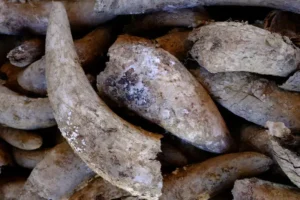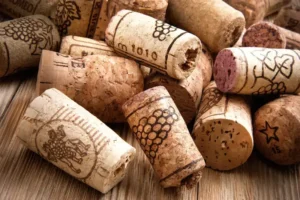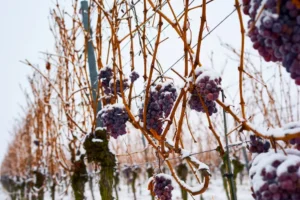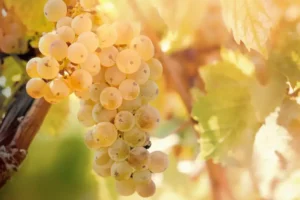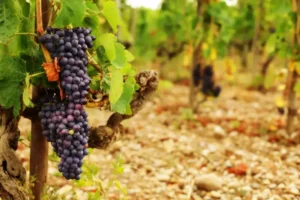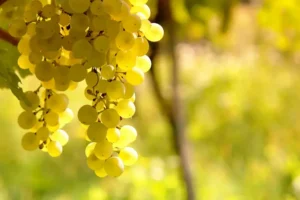What is Merlot?
Merlot is one of the world’s most widely planted red grape varieties and is best known for its smooth, approachable style. Its name comes from the French word merle, meaning “blackbird,” likely referring to the grape’s deep colour.
The grape originated in Bordeaux, France, where it has been cultivated since at least the 18th century. There, it remains a cornerstone of winemaking, most famously blended with Cabernet Sauvignon and Cabernet Franc to produce some of the region’s most prestigious reds.
Today, Merlot is grown in nearly every major wine-producing country, from France to California and Australia, and proved capable of producing outstanding single-varietal wines in its own right.
Over time, Merlot has spread across nearly every major wine-producing country, from France to California, Chile, and Australia. While it often shines in blends, it has also proven its ability to produce outstanding single-varietal wines with real character and depth.
Adaptable to different soils, climates, and winemaking styles, Merlot’s versatility is what makes it so enduring. From plush, fruit-driven bottles perfect for everyday drinking to complex, age-worthy wines from the world’s top appellations, Merlot has earned its place as one of the most loved grapes in the world.
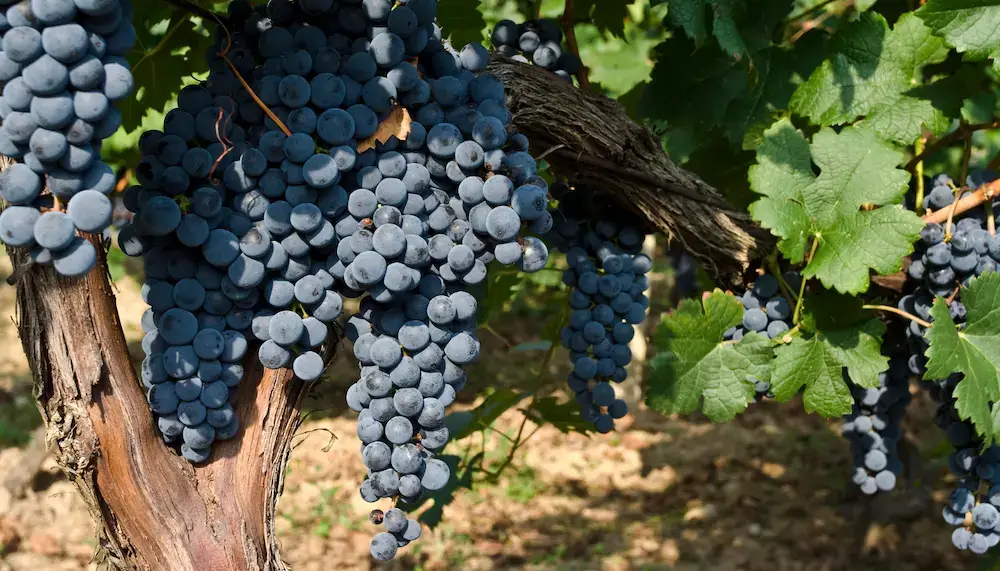
What does Merlot taste like?
Merlot is typically medium- to full-bodied with soft tannins and fruit-forward character, making it one of the most approachable red wines. Its flavours can range from juicy red fruits to deeper, darker notes depending on where it’s grown and how it’s made.
In cooler climates like Bordeaux or northern Italy, Merlot tends to be more structured, with flavours of redcurrant, plum, and herbal or earthy undertones. These wines often have fresher acidity and firmer tannins, giving them excellent ageing potential.
In warmer climates such as California, Chile, or Australia, Merlot becomes richer and riper, offering flavours of black cherry, blackberry, and chocolate with a velvety, plush texture. Oak ageing often adds layers of vanilla, spice, or mocha, enhancing its round, smooth style.
Merlot Flavour Profile
- Body: Medium to full
- Acidity: Medium
- Tannins: Soft to medium, smooth
- Sweetness: Dry
- Fruit flavours: Plum, black cherry, raspberry, blackberry
- Other notes: Chocolate, mocha, bay leaf, cedar, vanilla, herbs; can develop earthy, truffle-like notes with age
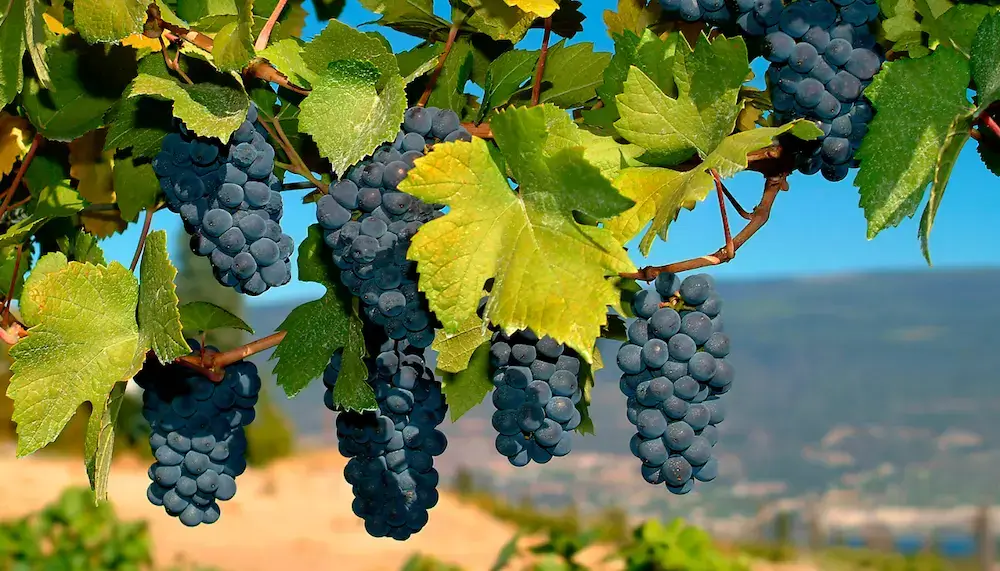
What food goes with Merlot?
Meat
Merlot’s soft tannins and medium-to-full body make it a great match for red meats. It pairs beautifully with lamb, beef stew, and pot roast. For a more casual meal, try Merlot with a burger.
Poultry
Merlot works well with lighter meats too. Roast chicken or turkey, especially when cooked with herbs or mushroom sauces, pairs nicely with Merlot’s round mouthfeel and gentle tannins. Even richer poultry dishes, like duck with berry sauce, can benefit from Merlot’s plush, fruity character.
Cheese
Merlot is a natural companion to semi-hard and hard cheeses. Gouda, Edam, Havarti, and mild Cheddar harmonise with the wine’s fruitiness, while aged Gruyère or Comté can match fuller-bodied Merlots. The wine’s smooth tannins and subtle earthy notes also complement nutty and slightly tangy cheeses.
Vegetarian Dishes
Hearty vegetarian dishes pair nicely with Merlot. Think mushroom risotto, roasted root vegetables, lentil stews, or stuffed peppers. Merlot’s subtle earthiness enhances umami-rich flavours, while its soft fruit keeps the pairing balanced and approachable.
Comfort Food
Merlot shines with classic comfort foods. Meatloaf, shepherd’s pie, lasagna, burgers and pizza with meat toppings. Its approachable style makes it a great choice for casual, hearty meals.
Desserts
Merlot can be enjoyed with certain desserts, particularly chocolate-based or berry desserts. Think chocolate cake, chocolate mousse, berry tarts, or cherry clafoutis. The wine’s ripe plum and black cherry notes complement the sweetness of the dessert.
Where do you find Merlot?
Merlot is grown widely across the globe, thriving in a range of climates that allow it to showcase both soft, plush fruit and more structured, age-worthy characteristics.
France
Merlot originates from Bordeaux, where it is planted all over but dominant on the Right Bank as the main component in appellations like Saint-Émilion and Pomerol. It is often blended with Cabernet Sauvignon and Cabernet Franc, producing some of the world’s most prestigious wines, such as Château Pétrus.
Merlot can also be found in other French regions, including Tuscany-style blends in southern France.

Saint-Émilion, France
Italy
In Tuscany, Merlot is frequently blended with Sangiovese and Cabernet Sauvignon to create “Super Tuscan” wines. It is used to bring a softer, fruit-forward complement to Sangiovese’s structure.
In northern Italian regions like Friuli and Veneto, Merlot is often made as a varietal wine with lighter, fresher fruit flavours.
United States
California produces a wide range of Merlots, from soft, ripe, fruit-driven wines in Napa Valley to more restrained, elegant examples in Sonoma County.
Washington State also makes excellent Merlot, known for its balance of juicy fruit, moderate tannins, and herbaceous undertones.
Chile
Merlot is one of Chile’s most successful red grapes, particularly in the Central Valley and Colchagua Valley. The warm days and cool nights produce ripe, smooth wines with great value.
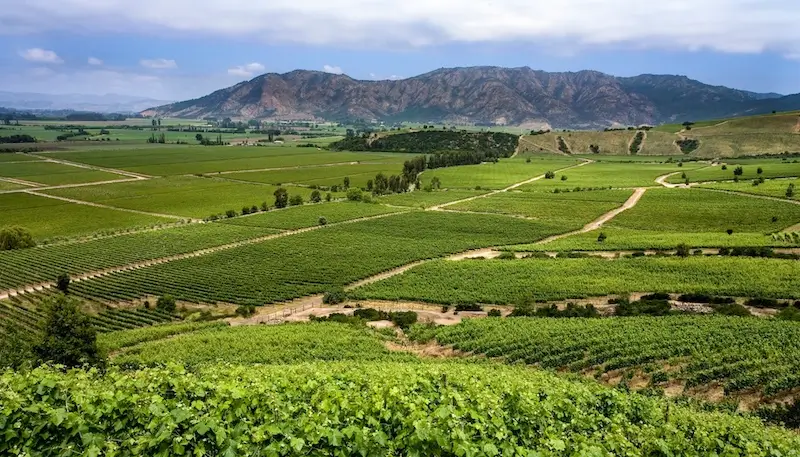
Colchagua Valley, Chile
Australia
While less common than Shiraz or Cabernet Sauvignon, Merlot thrives in cooler regions such as Margaret River and Barossa Valley. Here it typically produces rich, fruit-forward wines often blended with other varietals for structure.
Other regions growing Merlot
We also find Merlot in Argentina, South Africa, Spain, and Eastern Europe, where it is used both in blends and as a varietal wine.

